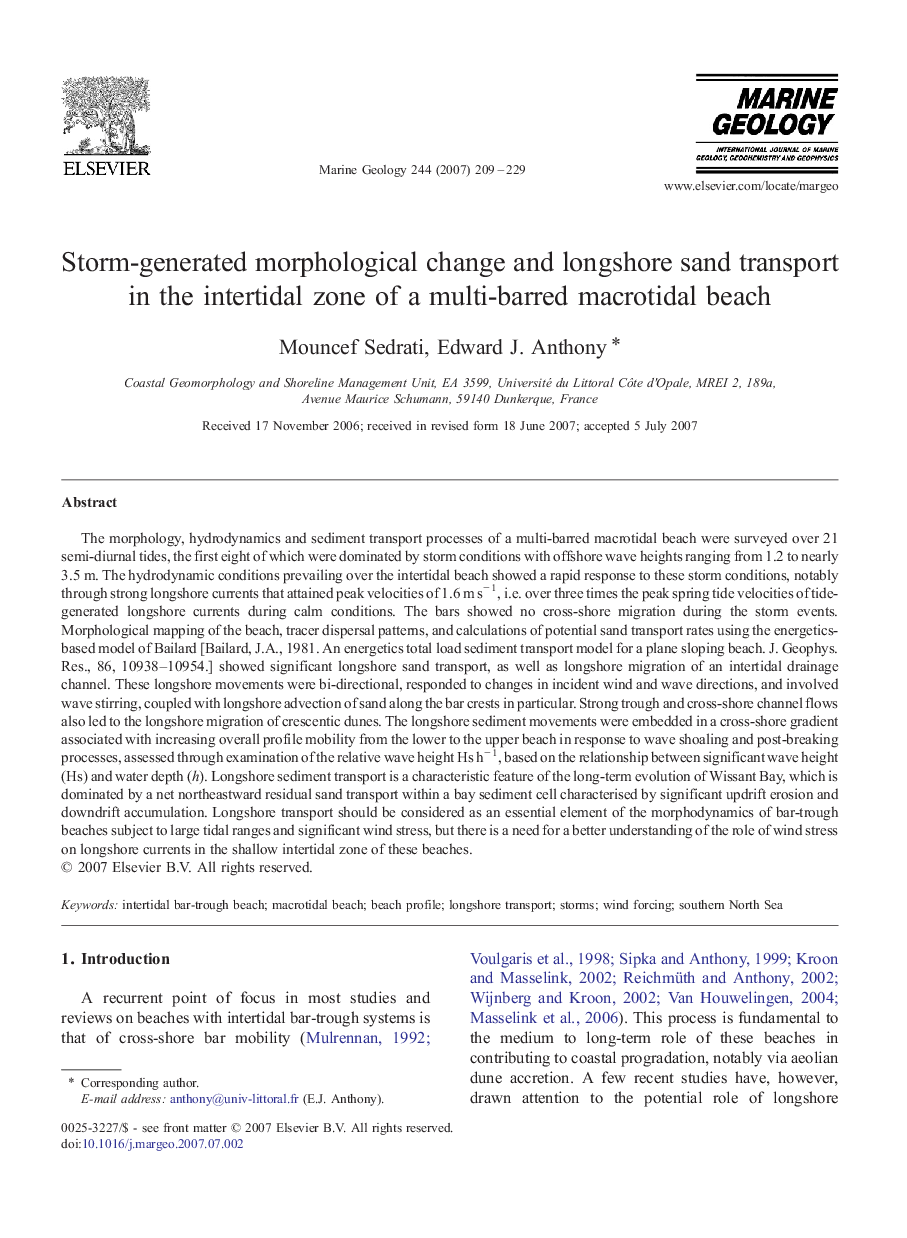| Article ID | Journal | Published Year | Pages | File Type |
|---|---|---|---|---|
| 4719477 | Marine Geology | 2007 | 21 Pages |
The morphology, hydrodynamics and sediment transport processes of a multi-barred macrotidal beach were surveyed over 21 semi-diurnal tides, the first eight of which were dominated by storm conditions with offshore wave heights ranging from 1.2 to nearly 3.5 m. The hydrodynamic conditions prevailing over the intertidal beach showed a rapid response to these storm conditions, notably through strong longshore currents that attained peak velocities of 1.6 m s− 1, i.e. over three times the peak spring tide velocities of tide-generated longshore currents during calm conditions. The bars showed no cross-shore migration during the storm events. Morphological mapping of the beach, tracer dispersal patterns, and calculations of potential sand transport rates using the energetics-based model of Bailard [Bailard, J.A., 1981. An energetics total load sediment transport model for a plane sloping beach. J. Geophys. Res., 86, 10938–10954.] showed significant longshore sand transport, as well as longshore migration of an intertidal drainage channel. These longshore movements were bi-directional, responded to changes in incident wind and wave directions, and involved wave stirring, coupled with longshore advection of sand along the bar crests in particular. Strong trough and cross-shore channel flows also led to the longshore migration of crescentic dunes. The longshore sediment movements were embedded in a cross-shore gradient associated with increasing overall profile mobility from the lower to the upper beach in response to wave shoaling and post-breaking processes, assessed through examination of the relative wave height Hs h− 1, based on the relationship between significant wave height (Hs) and water depth (h). Longshore sediment transport is a characteristic feature of the long-term evolution of Wissant Bay, which is dominated by a net northeastward residual sand transport within a bay sediment cell characterised by significant updrift erosion and downdrift accumulation. Longshore transport should be considered as an essential element of the morphodynamics of bar-trough beaches subject to large tidal ranges and significant wind stress, but there is a need for a better understanding of the role of wind stress on longshore currents in the shallow intertidal zone of these beaches.
